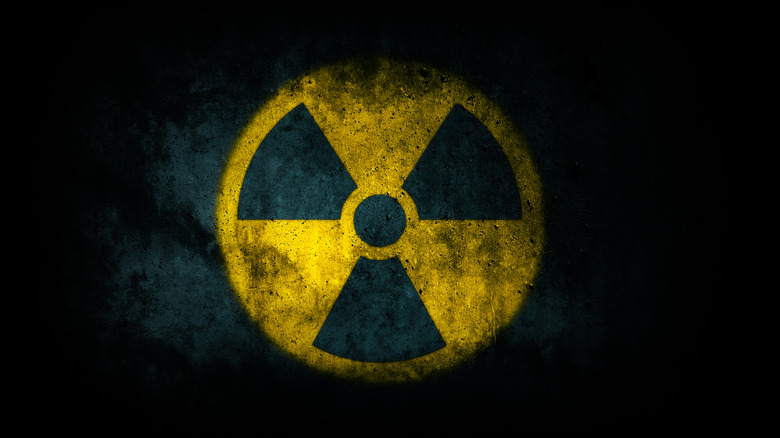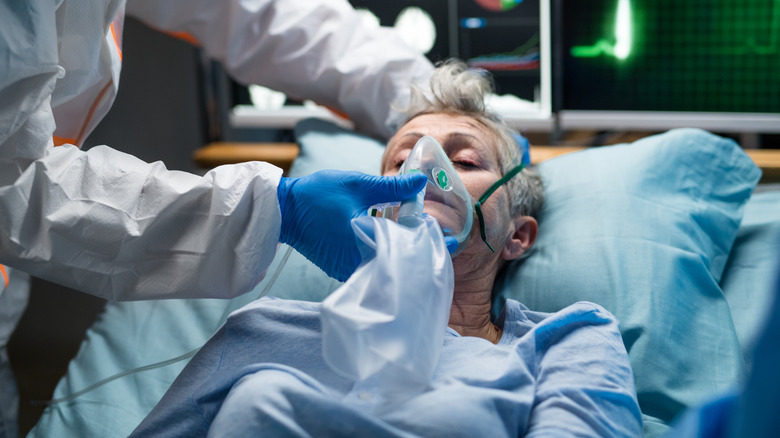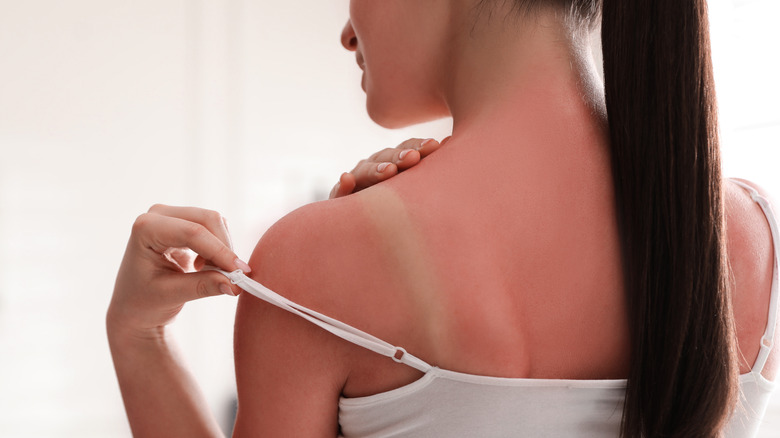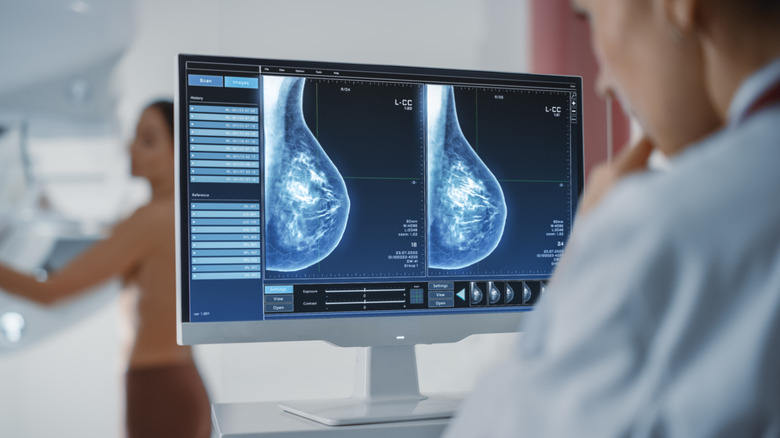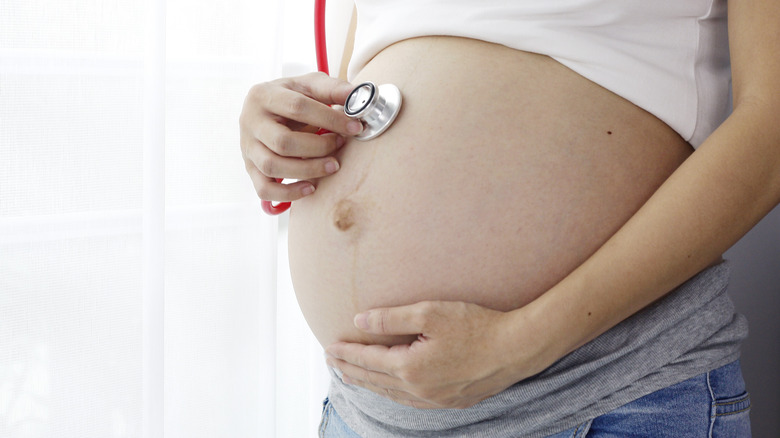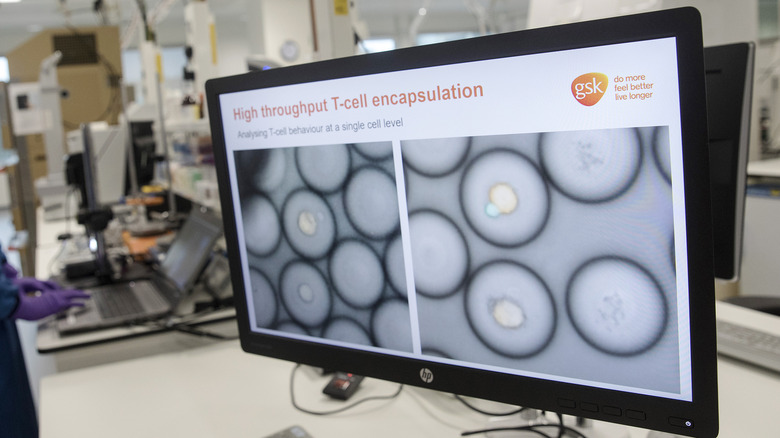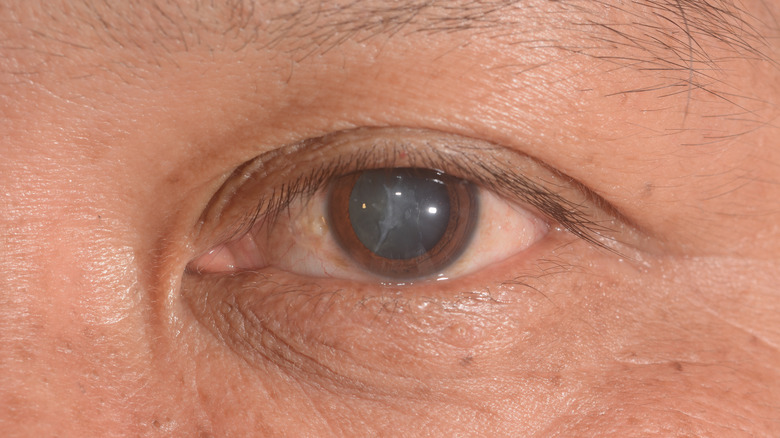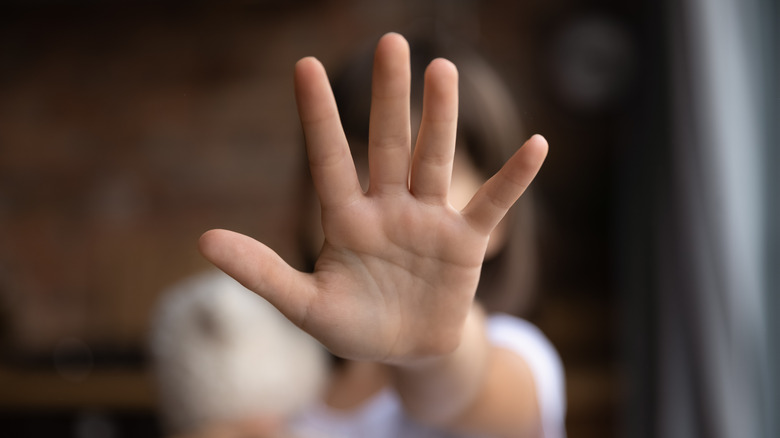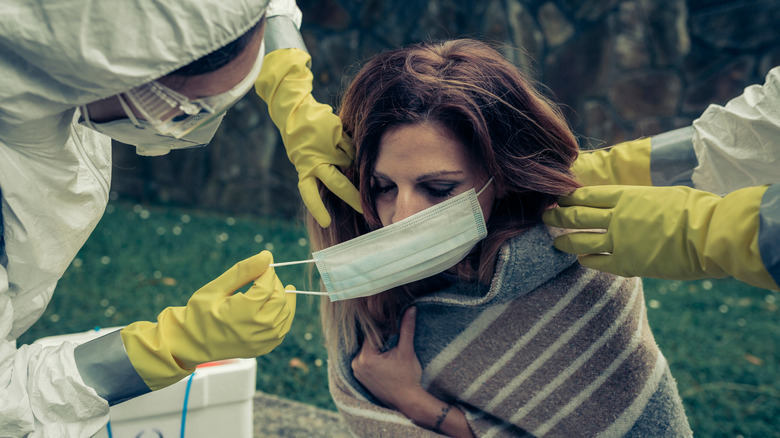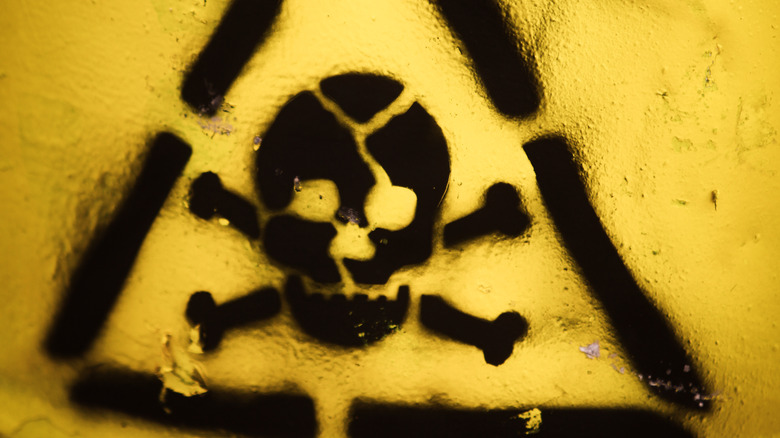What Happens If You're Exposed To Radiation?
What happens if you are exposed to radiation? Well, it depends first on the type of radiation you are exposed to. Ionized radiation, which is more dangerous, is emitted by x-rays and nuclear technologies, while non-ionized radiation, which is safer but not harmless, is emitted by the sun, fire, and electronics such as cell phones and wireless internet (via EMF Academy). Discussions of radiation exposure typically focus on the ionized variety, the danger of which depends on the amount that is emitted. Scientists measure ionized radiation in millisieverts (mSv), which is the international standard, or rem, which is commonly used in the United States, according to the Environmental Protection Agency.
The World Nuclear Association estimates that a dental x-ray emits just 0.01 mSv, which is a negligible amount. Even a full CT scan, which captures images of one's entire body, will expose an individual to just 10 mSv, another harmless figure. Those who work in the nuclear industry will experience some 20 mSv of radiation per year, which is considered an acceptable level. 100 mSv present a small risk of cancer, but immediate danger is not posed until 700 mSv. It is after the 700 mark that your health will be immediately and severely compromised. Sickness, hair loss, and other maladies will make life unlivable, but the real damage will be pernicious.
The more one reads about radiation, the more terrifying its fierce toxicity becomes. Here is what happens when your body is exposed to radiation.
Sickness and Acute Radiation Syndrome
If you are exposed to at least 700 to 1000 mSv of radiation, you will experience debilitating sickness (via World Nuclear Association). Milder symptoms include fever, nausea, loss of appetite and fatigue. If your exposure is around 1000 mSv, you may exhibit symptoms of Acute Radiation Syndrome (ARS), which makes for grim reading.
According to Lanc Industries, a firm that specializes in radiation shielding technology, Acute Radiation Syndrome can manifest in numerous ways. For example, as you experience nausea, fever, and fatigue, you can also expect bleeding from the gums, nose, and rectum. This bleeding may be accompanied by ulcers in the mouth, esophagus and stomach. Should you lie in bed, coiled with pain, you may clutch at your hair the way one might bite a leather strap, channelling whatever agony is afflicting them. However, in doing so, there is a good chance that you will pull clumps of hair out, as radiation damages our follicles.
Life expectancy of those suffering from acute radiation syndome is unclear. In recovery, bone marrow cells will start to bounce back, restoring white blood cells and strength of immunity. Full recovery will take anywhere from weeks to over a year, although the chance of fatal cancer later in life will likely be increased (via CDC). If symptoms of Acute Radiation Syndrome persist with little sign of recovery, then death should be expected.
Thermal burns
Thermal burns can be caused by both ionized and non-ionized radiation. Sunburn is a type of non-ionized thermal burn, and it affects millions of Americans. In fact, in 2015, 50% of adults aged 18-29 reported being sunburned in the last year, according to the National Health Interview Survey (per Medical News Today).
The symptoms of sunburn will be a matter of personal experience for many people. They include soreness, redness, and sometimes a warm, tight feeling. Particularly bad sunburn may lead to sun stroke/heat stroke, which can cause overheating, disorientation, sickness, and even death in extreme cases (via Saga).
However, the gravest thermal burns are caused by ionized radiation. Take the case of Harry Daghlian, a physicist who worked on the Manhattan Project, which produced the world's first atomic bombs. At just 24 years of age, Daghlian accidentally irradiated himself as he conducted a criticality test on a plutonium core (via Science Alert).The accident happened when Daghlian dropped a brick on top of the spherical core, creating a bright blue light and a wave of heat. Panicked, Daghlian grabbed the brick, which sent a tingling sensation up his arm. The young physicist had just exposed himself to around 5000 millisieverts of radiation — a fatal dose. As you can see in this graphic photo, Daghlian suffered horrendous burns to his hands. After 25 days of terrible sickness and pain, Daghlian was dead.
Cancer
Radiotherapy uses high doses of radiation to kill cancer cells. According to the National Cancer Institute, concentrated radiation is effective in manipulating cancerous cells, either delaying or completely destroying their progress. However, radiation can also do the opposite, causing a range of different cancers.
Carcinogenic risk becomes acute once radiation levels pass 1000 mSv (via World Nuclear Association). Those who experienced Hiroshima, Nagasaki, and Chernobyl all reported many forms of cancer, such as cancer of the breast, bladder, oesophagus, thyroid, lungs, liver, stomach, ovaries, and colon. Also common were leukemia and multiple myeloma, which were the quickest cancers to manifest, according to the American Cancer Society. Other cancers, namely large tumors, took as long as 20 years to appear. Nagasaki doctor Masao Tomonaga recollected the terrible suffering he witnessed. "I have seen [patients] who have suffered from five different types of cancers... For example, a female patient would first suffer from breast cancer. Second, colon cancer. After several years, lung cancer. Fourth cancer—a blood disease. Fifth cancer—pancreatic cancer. And this fifth cancer would finally kill her."
As terrible as these observations may be, perhaps the most troubling reality that these events taught us is that there are no certainties in the relationship between radiation and cancer. Anyone exposed to 1000 mSv of radiation should receive emergency care and long term monitoring. Yet even lower levels of radiation may cause cancer in the long term. Such is the pernicious effect of radiation.
Birth defects
The American Cancer Society wrote that during Hiroshima and Nagasaki, babies exposed to radition in-utero had a lower risk of developing cancer than during childhood. That may be true of the atomic bombings in August 1945, but in the 21st century, the CDC states that unborn babies are particularly sensitive to radiation's carcinogenic properties.
Despite radiation's risk of cancer, the immediate concern for mothers ought to be birth defects, especially between the second and eighteenth weeks of pregnancy. According to Birth Defect Research for Children, radiation can mutate an unborn baby's DNA, causing a range of defects such as mental disability, shorter stature, and a reduction in size of the head and brain.
Many terrible birth defects were linked to the Chernobyl disaster of 1986. In fact, a UNICEF study in 2010 (via CNN) estimated that over 20% of adolescents in Belarus, which shares a southern border with Ukraine, have shown signs of radiation poisoning, which have manifested in severe disabilities and chronic illnesses. Numerous institutions have been opened to care for those with these defects, such as the Vesnova Home for Invalid Children, which has some 170 children and teenagers in their care (via Business Insider). Common ailments include congenital heart defects, which may require open heart surgery in children as young as three months. More unusual is a condition that causes teenagers to grow no larger than a toddler or small child.
Damage to bone marrow and white blood cells
Radiation can cause serious damage to cell and DNA structure. According to Darragh O'Carroll, MD (via Vice), the first cells to be affected are those in the intestines and bone marrow, most of which occurs after the prodromal phase, which consists of the aforementioned flu-like symptoms. This is followed by a relatively symptom-free period, which may last anywhere from a few hours to a few weeks, depending on the amount of radiation.
However, the sickness will soon return, and the details of what happens are truly gruesome. Radiation will cause your intestinal lining to die and slide away, killing white blood cells in the process, which weakens the immune system and predisposes you to infections. Meanwhile, your bone marrow will cease to create clot-forming cells, which may cause bleeding from the mouth, nose, rectum and elsewhere in your ravaged body.
Life in these conditions is utterly miserable, but they can be improved by medical intervention, should you be lucky enough to have access to healthcare during what would likely be a widespread radioactive emergency. Blood tranfusions, dialysis and antibiotics would all bring much needed relief, although your situation would still be dire.
Cataracts
Cataracts have been diagnosed in those who have been exposed to radiation, namely victims of the Chernobyl disaster. According to the experts at Barrier Technlogies, the most common eye pathologies found in radiation victims are cortical cataracts and posterior subcapsular cataracts.
Damage is caused most often by scatter radiation, which is emitted during x-rays. If scatter radiation enters your eyes, it removes electrons from the atoms of your lens' cells, distorting them. These distortions build, creating the cloudy haze that will lead eventually to blindness.
If you are due to have an x-ray, don't worry. An occasional x-ray will not present a great risk of cataracts. For medical professionals, however, precautions are taken. If a technician cannot leave the room of an x-ray, they may use leaded eyewear in addition to whole body protection, such as x-ray aprons, thyroid shields, and specialist gloves. Furthermore, there is hope for those whose eyes have been damaged by radiation. According to UCI Health, cataract surgery has a 99% success rate and usually takes just minutes to complete, with surgeons clearing distorted vision with an artificial lens.
Prejudice and poverty
Those who are exposed to radiation may also be exposed to prejudice. In Japan, for example, the survivors of Hiroshima and Nagasaki are sometimes referred to as "hibakusha," an often derogatory phrase meaning "bomb affected people" (via Hibakusha Stories).
According to the Asia-Pacific Leadership Network, the hibakusha were often discriminated against. Some were even placed in "genbaku suramu," meaning atomic slums. Victims faced rejection in their public and private lives. Employers would turn down those affected by radiaiton, especially women, who were also the most likely to be rejected by romantic partners, often because of visible injuries or fear of inheritable radioactive ailments.
Since then, the hibakusha have become "unmatched advocates for nuclear disarmament," according to UN Secretary-General António Guterres. Guterres said that the hibakusha are "a rallying voice for the safety and well-being of all humanity," a sentiment that was echoed by Lassina Zerbo, who added that the hibakusha comprise "a forceful moral compass for humanity" and are "indispensable in the long battle towards nuclear disarmament."
Mental health issues
Victims of radiation exposure, namely those affected by Hiroshima, Nagasaki and Chernobyl, are reported to have suffered a range of mental health issues. In the months and years following the detonation of Little Boy and Fat Man, many victims had nightmares and long term sleep deprivation, with some terrified by the radiation that had poisoned their bodies, comparing it to the parasite that eat away at them (via Asia-Pacific Leadership Network).
Trauma, anxiety and depression continued in the ensuing decades, with many victims refusing to speak about what they had experienced. "My grandfather never ever talked about the bomb," said Dr. Kae Takase. Nagasaki Medical College has described this painful inhibition as "atomic-bomb numbness syndrome," which is marked by reticence and emotional numbness.
An extreme example of this is Tsuyo Kataoka, who was just 17 when the bomb hit Nagasaki, killing all eight members of her family. Somehow, Kataoka never spoke about this terrible loss. She also felt guilt, believing she had been punished for some sort of sin. Years later, after baring all to the pope, Kataoka became an advocate and public speaker.
Similar strife and dysfunction occurred after the Chernobyl disaster in 1986. The International Atomic Energy Agency reported that displaced peoples, blighted by poverty, PTSD, and fear of radiation, were experiencing higher levels of apathy, alcohol abuse, and suicide (via CNN). Many families were torn apart by this misery, with children placed in institutions that can cause more harm than good.
Death
Radiation will make you vomit and bleed, damaging you on a molecular level. Quickly or slowly, radiation will kill you. The narrative of radioactive death will depend on the type of radiation, the level of exposure, and access to healthcare. A particularly horrendous story is that of Hisashi Ouchi, tragically known as the most irradiated individual in history.
Ouchi was a 35-year-old lab technician at the nuclear power plant in Tokaimura, Japan (via All That's Interesting). On the morning of September 30, 1999, Ouchi and two colleagues were tasked with mixing fuel, despite being untrained in the procedure. Improvising, the men proceeded to unload a grossly excessive amount of uranium into the wrong tank, pouring seven times the necessary volume. The result was disastrous. Gamma rays burst from the tank, directly above which Ouchi was standing, exposing the technician to an unprecedented 17,000 milisieverts — almost thrice the lethal dose.
The effects were immediate and devastating. Agonizing burns covered his entire body. He was hemorrhaging from every orifice, including his eyes. Ouchi was taken to intensive care in Tokyo, where underwent numerous skin grafts, blood transfusions and even stem cell transplants, which had never been attempted on a radiation victim. During lucid moments, Ouchi would cry, "I can't take it anymore!" Yet his family insisted on resuscitation, even after a string of heart attacks, including three in just one hour. Finally, 81 days after the accident, Ouchi died from cardiac arrest and multiple organ failure on December 21, 1999.
